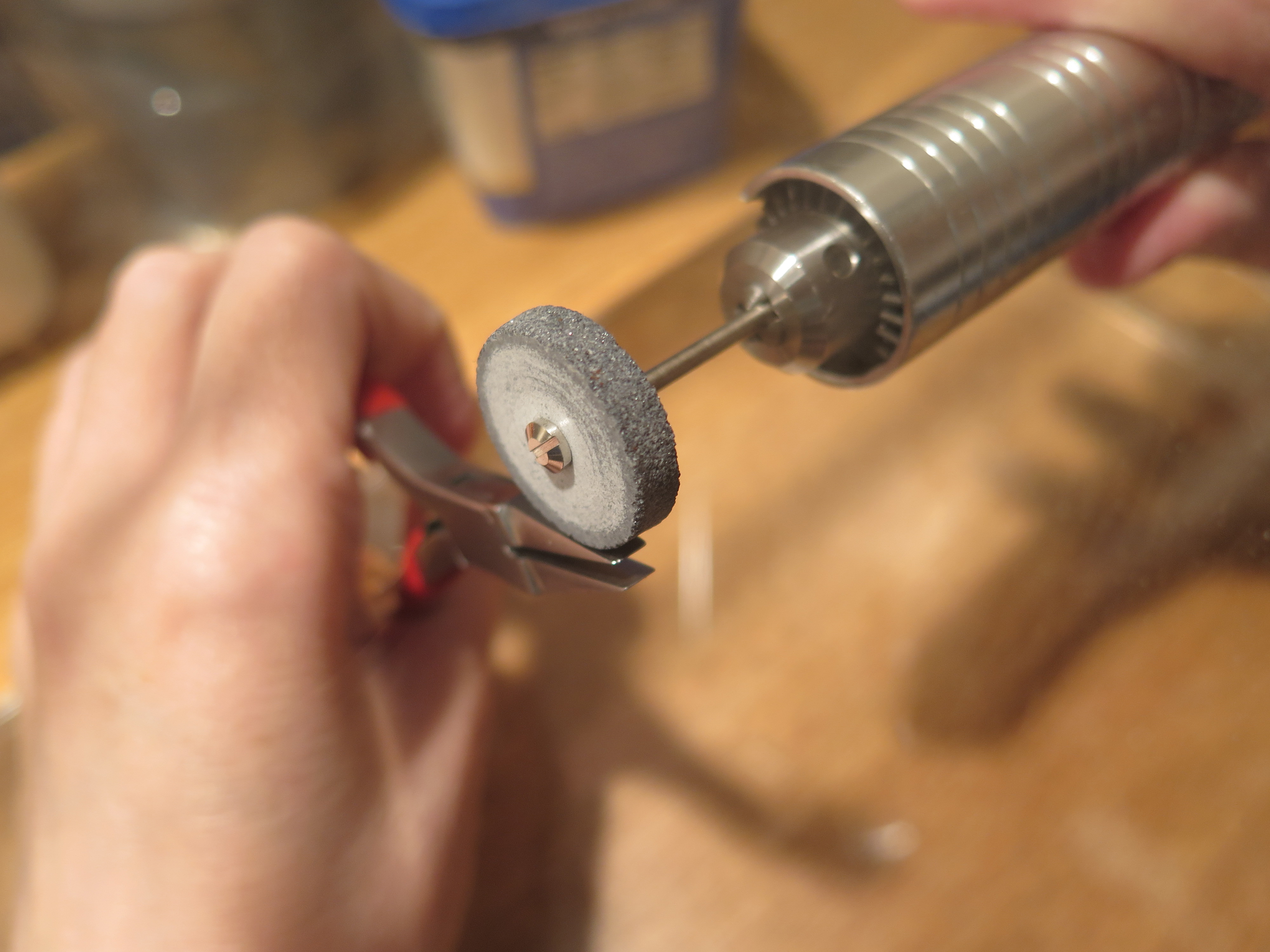How I Modify My Plier Jaws
Maillers often make modifications to the jaws of their pliers to suit their specific needs. I work in jewelry metals and use jump rings that are medium-sized to micro. I find that thin plier jaws can be very helpful when weaving in tight spaces (this is another reason I don’t like coatings, they just add thickness). Thin is not to be confused with narrow. Most people will reach for a pair of chain nose pliers when they hit a snug spot while weaving. Although the jaws of chain nose pliers are narrower than the jaws of flat nose pliers, they are often just as thick. Therefore, you may still have some trouble trying to fit those pliers between two closely spaced jump rings.
In addition, the narrower jaws of chain nose pliers provide less leverage and control, two things I really need when working in a tight spot. Chain nose pliers also increase the odds of marring the jump ring I’m trying to close (see previous blog post).
 I use a flex shaft and a heatless grinding wheel to thin out the jaws of my pliers. When using a flex shaft, make sure to take proper precautions such as wearing safety glasses and a dust mask, tying back long hair and not wearing loose fitting clothing.
I use a flex shaft and a heatless grinding wheel to thin out the jaws of my pliers. When using a flex shaft, make sure to take proper precautions such as wearing safety glasses and a dust mask, tying back long hair and not wearing loose fitting clothing.
 I have a limited space in which to work, so I use a grinding box to keep debris under control (please pardon my messy work space!).
I have a limited space in which to work, so I use a grinding box to keep debris under control (please pardon my messy work space!).
 I lightly run the wheel along the outside of the jaws. I work in even strokes from the tip of the pliers towards the back until the jaws reach my desired thickness.
I lightly run the wheel along the outside of the jaws. I work in even strokes from the tip of the pliers towards the back until the jaws reach my desired thickness.
 Above are samples of what the jaws look like before and after modification.
Above are samples of what the jaws look like before and after modification.
You may desire to shape the jaws of your pliers differently (angled or rounded), depending on your particular needs.

